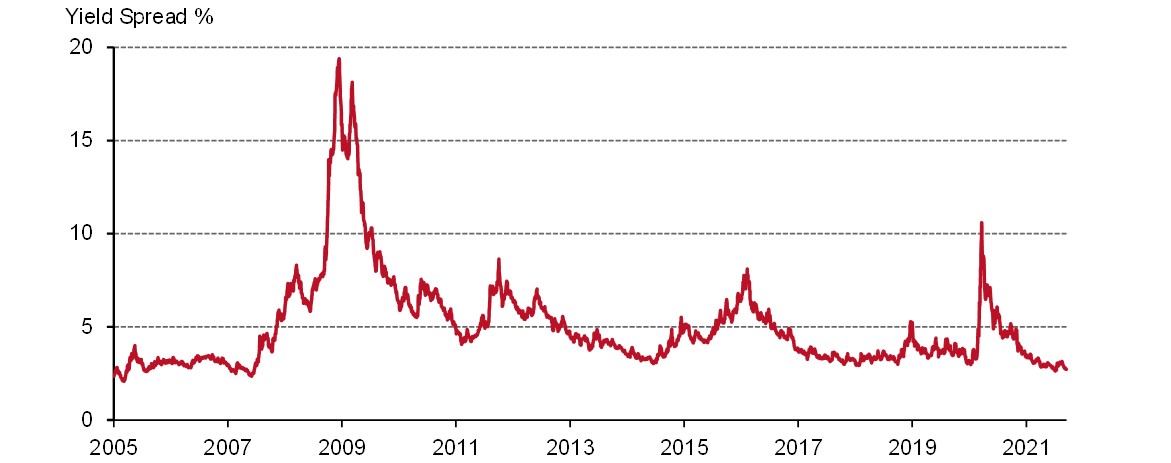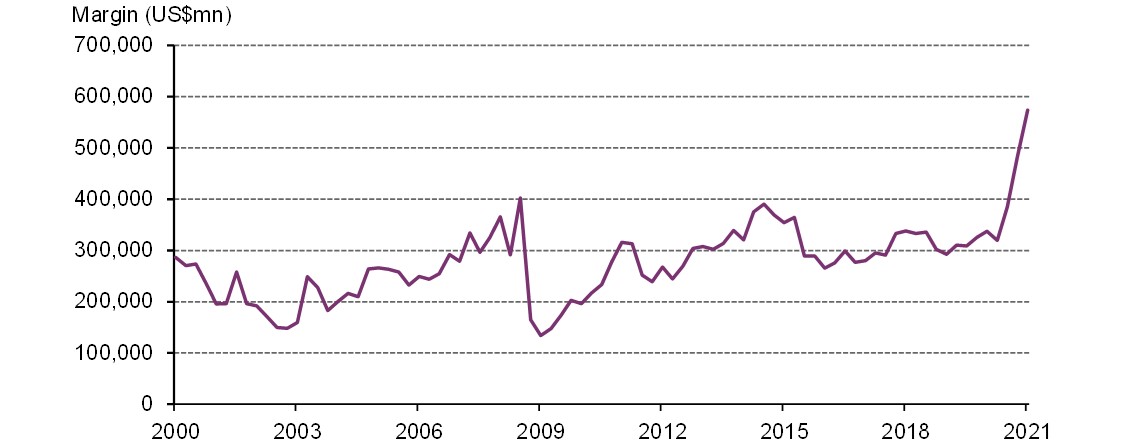Lower rates and lower bond yields may drive increased portfolio leverage
We’ve regularly discussed rates and inflation in 2021 as two key drivers of global markets.1 With lower expected future returns on fixed income, these drivers give credence to the idea that many institutional investors would need to move further out on the curve (take more risk) and/or use leverage to meet their financial obligations. Both of which now appear to be happening.
Alternative investment allocations are increasing as bond return expectations fall
Despite the upward trend in inflation numbers and rates expectations increasing, we continue to see lower yields, particularly in lower quality bonds, such as those labelled as “junk” or those with ratings BB or below. Currently, the nominal yield of the junk bond market is approximately 3.8% with an average duration (maturity date) of six years, compared to an overall global bond market yield of under 1%.2 Various reports, including our recent joint survey with Coalition Greenwich, indicate that investors are adding alternative assets like private equity, REITs, and hedge funds to their portfolios, but there is still a meaningful allocation to fixed income.3
Those bonds, however, offer lower yields. Endowments, for example, have recognised lower expected fixed income returns and have reduced their fixed income allocation to 21% on average, from levels as high as 40% a decade earlier. Larger endowments, for example, have an average allocation to illiquid private markets and alternatives of approximately 30%.4 Despite the smaller allocation to fixed income, it remains a relevant component in expected returns.
Endowment and pension liability requirements may struggle to be met
Examining the 134 largest public pension funds, their required liability returns have both a median and average required rate of return of 7%.5 For those funds, five-year returns have been 5.1% and 10-year returns have been 7.5%.6 But market expectations for equity returns over the coming years average around 5% and fixed income averages around 2%.7 Even with larger allocations to alternatives, it is clear that with low rates and equity return expectations, it will be difficult to achieve this moving forward, absent portfolio weighting adjustments - such as buying higher yielding but lower quality debt, or increasing portfolio leverage.
Yields between junk bonds and risk-free assets have compressed to levels last seen just before the financial crisis
The search for yield is evident when comparing the junk bond yield to US Treasuries (Chart 1). The compression of the spread, i.e., requiring less and less yield for riskier bonds has created market risks. The last time we saw the option adjusted spread OAS to US treasuries this low (2.7%) was just before the Global Financial Crisis (GFC).8 Recall too that outside of the subprime and traditional mortgage related causes, leverage was a significant driver.
Chart 1: Junk bond to 10-yr treasury yield spreads are at levels last seen just before the Global Financial Crisis
Spread between US High Yield Index (BB rated and lower) and similar US Treasury tenors


